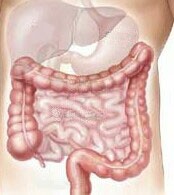
MONDAY, June 30, 2014 (HealthDay News) — Scientists are hopeful that cells inside the human gut might someday be retrained to produce insulin, the metabolic hormone that’s lacking in people with type 1 diabetes.
The team from Columbia University Medical Center in New York City said their findings hold promise for the development of a new treatment for type 1 diabetes that does not involve stem cells.
For people with type 1 diabetes, their body’s natural insulin-producing cells, known as pancreatic beta cells, are destroyed by their immune system. For the past 20 years, scientists have been trying to help the body make new insulin-producing cells that replace those that are lost to the disease.
“The search for the ‘holy grail’ is to produce a source of insulin producing cells either for transplantation or to convert the body’s own cells to make sufficient insulin,” said one expert, Dr. Derek LeRoith, professor of medicine and diabetes at the Icahn School of Medicine at Mount Sinai, in New York City.
Right now, “insulin injections must be used to replace this lack in insulin production and release,” said LeRoith, who was not involved in the new research.
Insulin-producing cells have been created before using stem cells, but these cells do not yet fully function like natural insulin-producing cells, the Columbia research team explained.
However, by simply turning off a particular gene, the Columbia scientists were able to convert cells in the human gut into cells that make insulin. They said the findings suggest that “reeducating” existing cells may be an easier way to replace the cells lost in type 1 diabetes than creating new cells using stem cell technology.
“People have been talking about turning one cell into another for a long time, but until now we hadn’t gotten to the point of creating a fully functional insulin-producing cell by the manipulation of a single target,” study senior researcher Dr. Domenico Accili, a professor of medicine at Columbia, said in a university news release.
Prior research conducted by the team at Columbia involving mice revealed that intestinal cells could be turned into insulin-producing cells. Insulin made by the transformed gut cells was then released into the bloodstream and effectively controlled the blood sugar levels in diabetic mice. The research was subsequently confirmed by another team of scientists.
The Columbia team’s latest findings found this technique also hold promise for the treatment of type 1 diabetes in human cells.
In conducting the study, published online June 30 in Nature Communications, the researchers re-created a tissue model of the human intestine using stem cells. They then retrained the gut cells to make insulin by turning off a particular gene, known as the FOXO1 gene.
According to Accili’s team, the genetically engineered cells began emitting insulin in about a week. The study’s authors also pointed out that the cells only released the insulin in response to sugar.
“By showing that human cells can respond in the same way as mouse cells, we have cleared a main hurdle and can now move forward to try to make this treatment a reality,” Accili said.
For his part LeRoith called the study “exciting.”
“This study and others like it may form the basis of future development of insulin producing cells that could be used in ‘curing’ type 1 diabetes,” he said.
The research is very early, and laboratory studies don’t always translate into success in humans. However, the researchers remain hopeful. Accili said that the next step in developing a new type 1 diabetes treatment involves to find a drug that can block the FOXO1 gene in the human gut.
More information
The American Diabetes Association provides more information on type 1 diabetes.
Copyright © 2025 HealthDay. All rights reserved.

